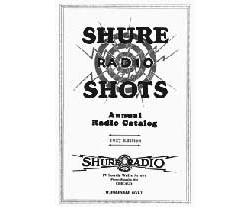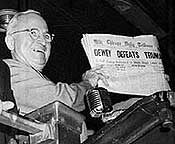
1942-1944: T-30 throat microphone, HS-33 and HS-38 headset microphone, M-CI microphone for oxygen masks, and Battle Announce Microphone are all made for the military. Using T-30s, bomber crews could communicate over the noise inside the planes. Shure adopts strict military standards (MILSPEC) as the standard of reliability for all Shure microphones.
1946: Shure is the largest producer of phonograph cartridges in the U.S., supplying cartridges to major phonograph manufacturers, including Philco, RCA, Emerson, Magnavox, Admiral, and Motorola.

1946: Shure Brothers Company becomes Shure Brothers Incorporated.
1948: First phonograph cartridge capable of playing both long-playing (LP) and 78 rpm (revolutions per minute) records.
1951: Unidyne 55S is a smaller version of the Unidyne 55.
1952: First Shure ribbon microphone, Model 300.
1953: First wireless microphone system for performers, called the Vagabond. Powered by two hearing aid batteries, the system could transmit within a “performance circle” of approximately 700 square feet.

1954: M12 Dynetic Phono Reproducer is a tone arm/phono cartridge combination that set a new industry standard with its tracking force of only one gram.
1955: First mobile communications microphone designed to also function as a loudspeaker.
1956: Shure moves from downtown Chicago to its present corporate headquarters in Evanston, Illinois.
1958: M3D phonograph cartridge is the world’s first cartridge to successfully meet performance requirements of stereo recording.
1959: Unidyne III microphone is the first high-quality unidirectional microphone that is used by speaking into the end (“end-firing”) rather than the side of the microphone. It was the predecessor to the SM57.
1965: SM57 dynamic microphone is rugged and reliable with a clean, natural sound. Into 2000, it continues to be the U.S. President’s lectern microphone.
1966: Shure SM58 (“SM” for “studio microphone”) is adopted by rock-and-roll musicians, who find it offers the right combination of rugged reliability and excellent sound quality; it becomes the standard for live performance vocals. V15 Type II, the first computer-designed phono cartridge, features superior tracking ability.
